Photos, videos and domcuments about local heritage (traditional costumes, bags, carved objects)
P 12 Activities. Visit to a local wood carver
On 26 August 2019, 7 students who are members of the target group of the project "PRomotion Of Identity, Euopean Culture and Tradition" (ref no. 2018-1-IT02-KA229-047925_3), together with Mr. Rolland Szedlacsek, responsible for dissemination and IT activities, visited a special person who contributed a lot to our cultural heritage, Mr. Traian Grunta, 76 years old, from Maleia, Petrosani.
Mr. Grunta is the last known wood carver in the Jiul Valley who is still creating (but in a very small number) wooden objects like staves (called ‘boate’) and crosses. The "boate" are staves made of wood created for shepherds in order to be used for protection and sometimes replacing the usual walking sticks. He also carves crosses and this has brought him fame in the nearby regions. They are designed according to his imagination and inspiration, bringing in a mix of culture and art.
We asked Mr. Grunta some questions, such as the time when he started creating these staves or who taught him how to create them. We were amazed by the way he answered the questions, because he is a person who contributed a lot to our legacy, knowing there is no one else to keep on creating the "boate" anymore after his inevitable death. This tradition used to be sent from father to son, but unfortunately, his son wasn't that interested in this to continue the family business.
However, we've learnt that creating those handmade staves requires a day's time in order to finish the entire design, and their price is really accessible.
To conclude, it's quite sad that he's the end of a saga full of culture and history, and I really hope there will be somebody to take his place in the future.
Text by Cristian Savu
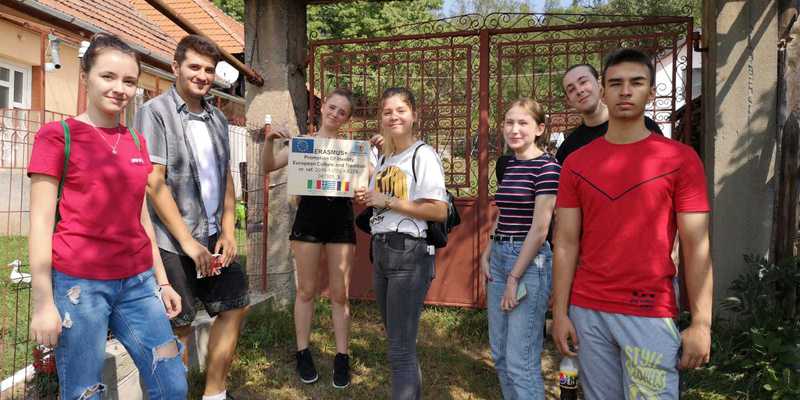
The group of students who visited Mr. Grunta
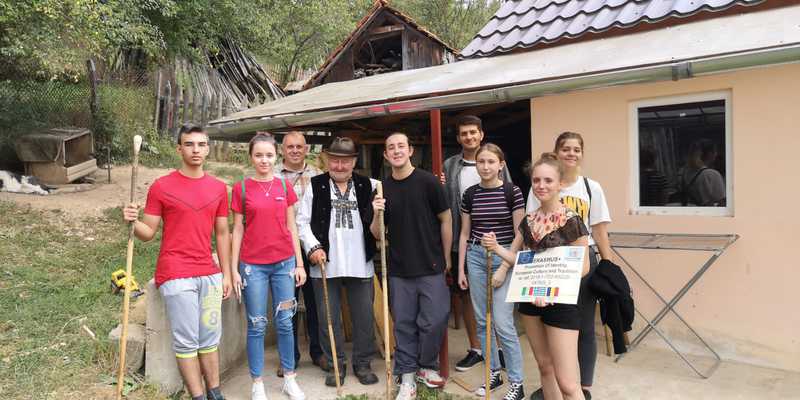 The students with Mr. Grunta
The students with Mr. Grunta
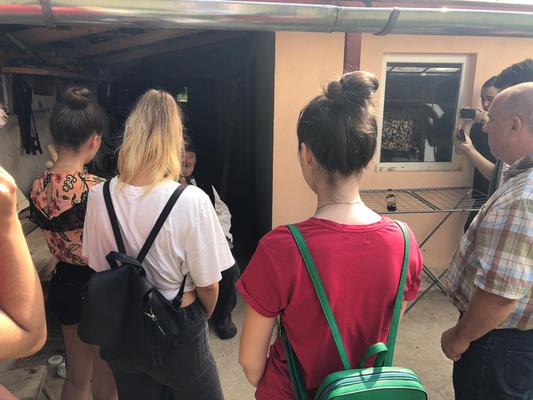
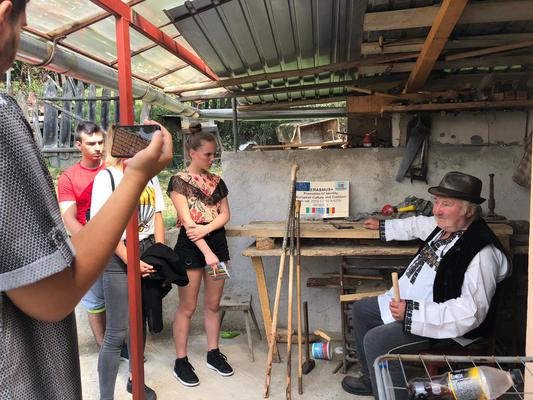
The students discussing with Mr. Grunta
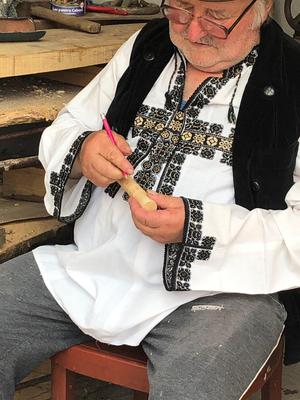
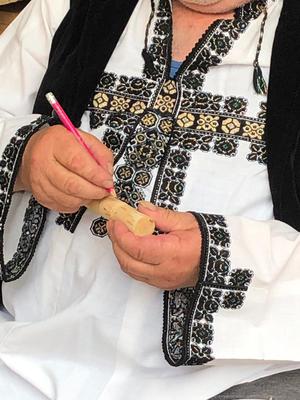
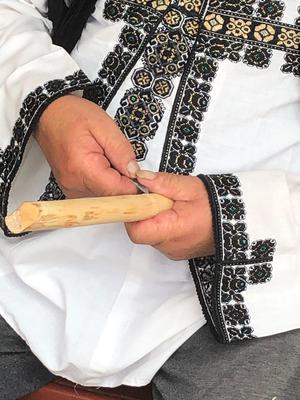
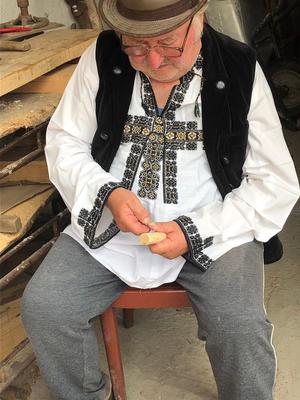
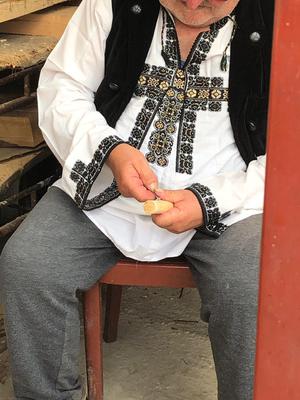
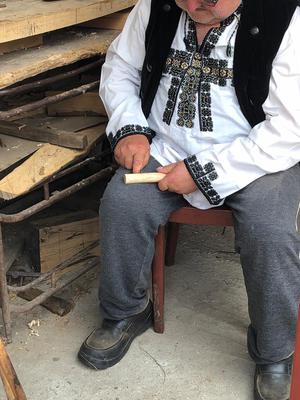
Mr. Grunta drawing and carving
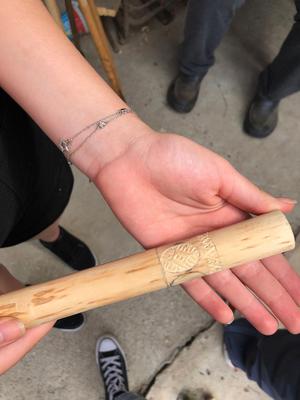
The staff created while the students were there
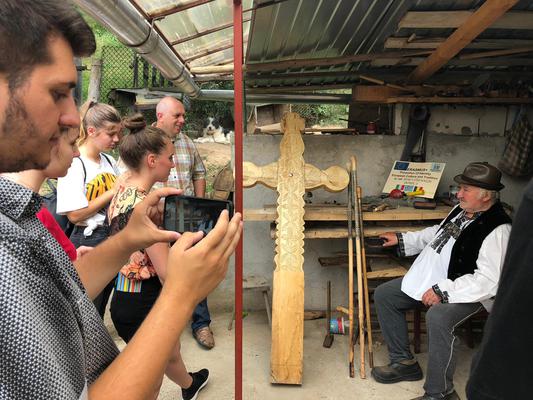
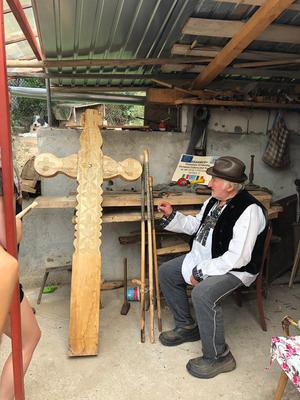
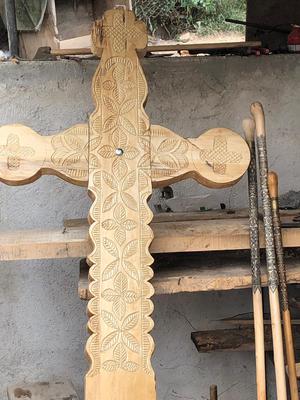
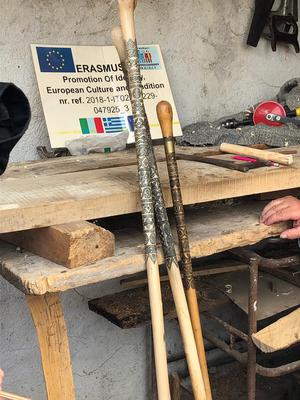
The staves and the cross created by Mr. Grunta
Photos taken by Erika Soo, Aurora Catan and Rolland Szedlacsek
The students made a Power Point Presentation with more details about Wood carving in the Jiu Valley. The text from Romanian was translated by Sergio Ionasc and the presentation was made by Erika Soo.
WOOD CARVING (1).pptx
P 13. Visit to Mrs. Vasie Buta to learn about traditional costumes and bags
On Tuesday, 3 September 2019, 3 students from “Mihai Eminescu” National College together with Mrs. Stefania Manea, coordinator of the Erasmus+ Project “Promotion Of Identity, European Culture and Tradition” (ref. no. 2018-1-IT02-KA229-047925_3) and Mr. Roland Szedlacsek, responsible for dissemination and IT activities, visited Mrs. Vasie Buta, 73 years old, from Dalja Mica, Petrosani, who has been making traditional costumes and bags (called “straite”) since she was 13. In the Jiu Valley, there are very few women who make and sell traditional costumes and bags and she is one of them.
During the visit, they had the occasion to admire her collection of costumes and "straite", to listen to her life stories and learn how to weave. The traditional bags and costumes are real pieces of art as we found out that women work even one year at a costume and one month at a bag. Of course, these traditional pieces aren’t simple as each woman who makes them has her own traditional symbols and motifs which make them special. In the past, women were very proud to wear those pieces as they made them feel rich and beautiful. Nowadays, the costumes are worn only on special occasions (e.g. pastoral festivals, Christmas etc.). However, you often see old ladies carrying "straite" instead of handbags when going shopping in the villages from the Jiu Valley.
The visit was a great experience because two of the students had the chance to wear a traditional costume which was made over 50 years ago by Mrs. Vasie herself. Also, we saw the traditional house where she lives with her husband and we learned that in the past, the houses were made of wood which offers them comfort and safety. We were speechless when the woman showed us her photos, described us every photo in detail and when they were taken.
Her regret is that nobody from her family wants to continue her tradition even if her daughter, Mrs. Maria Necsi, knows how to weave and sew. It was interesting to find out what life was like back then and this visit made us appreciate more the values of our area.
By Oana Albu
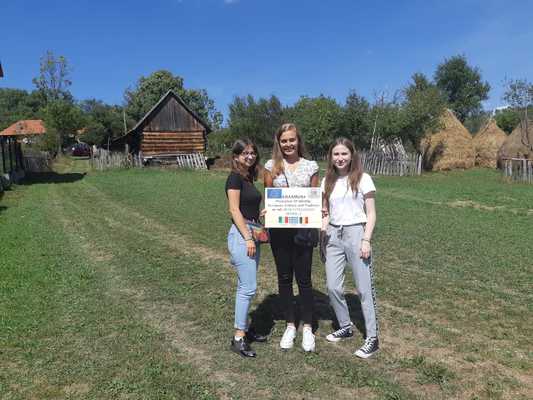
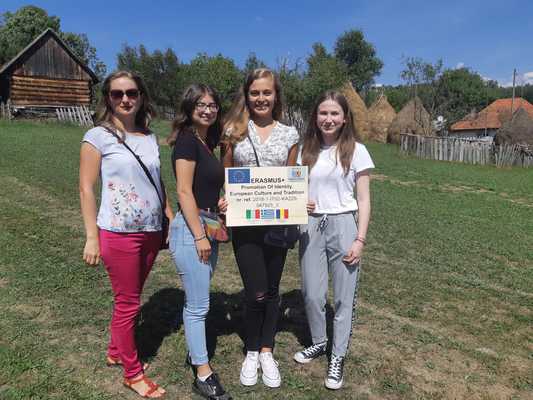
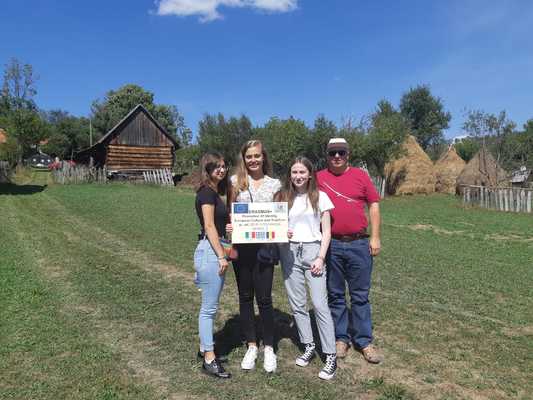
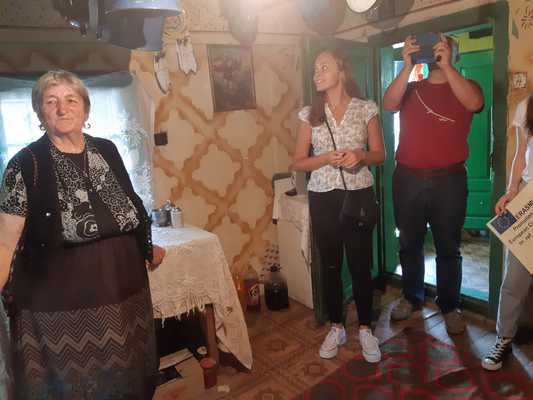
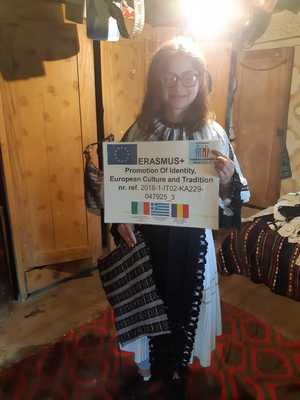
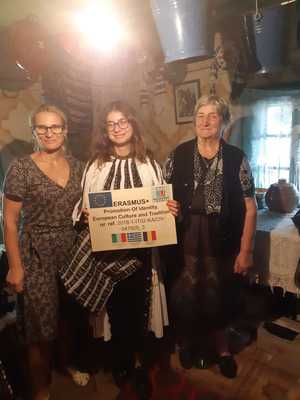
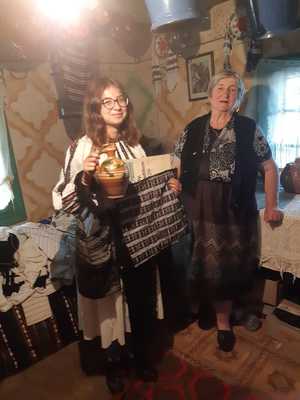
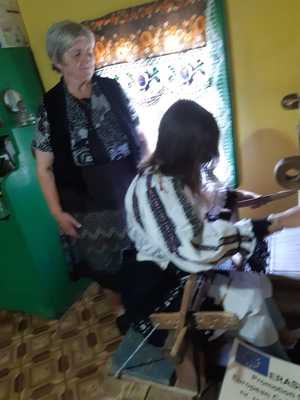
Denis, learning to weave
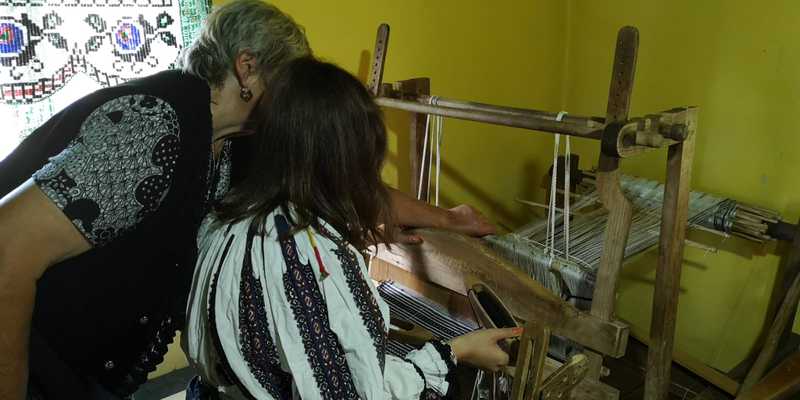
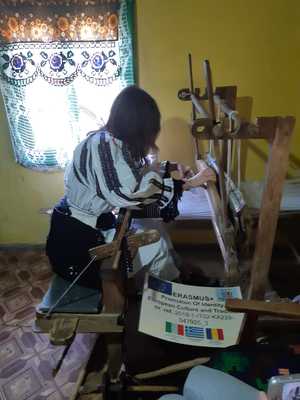
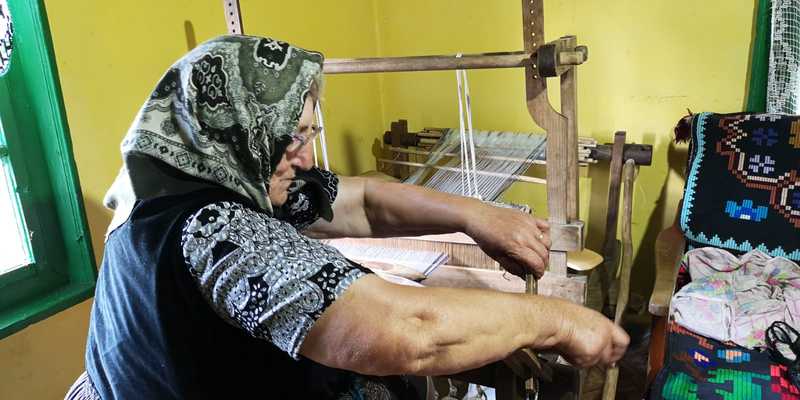
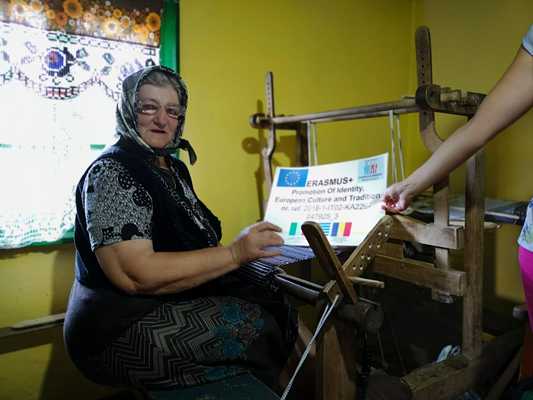
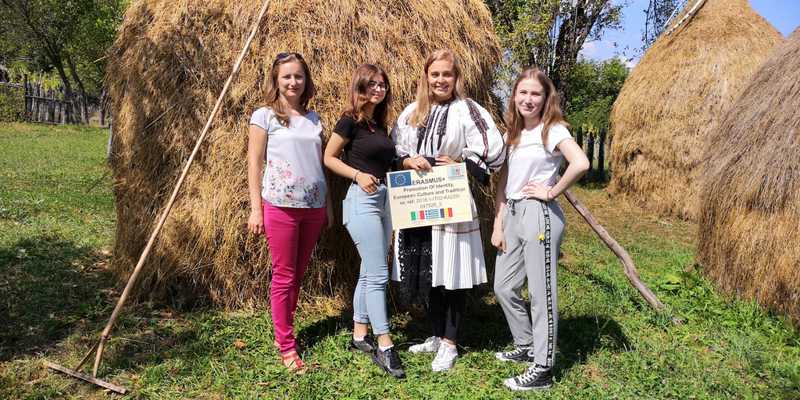
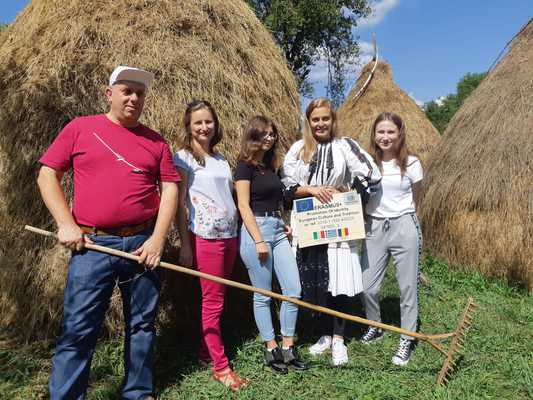
Denisa and Oana, wearing traditional costumes
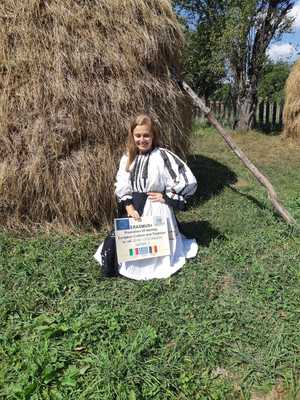
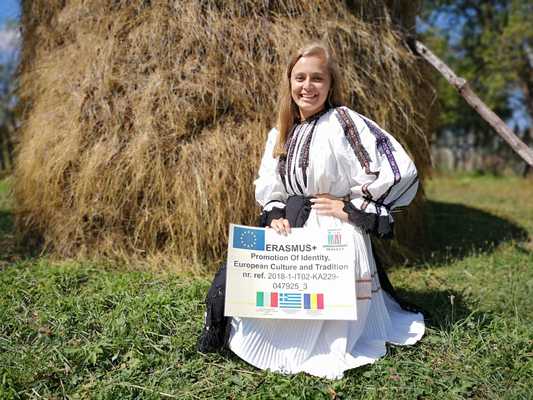
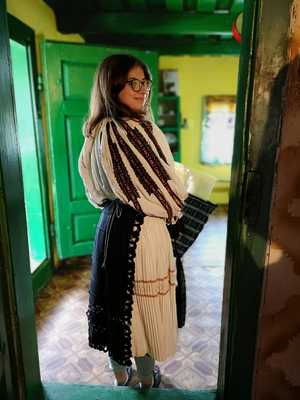
Mrs Vasie, showing us her collection of bags and costumes
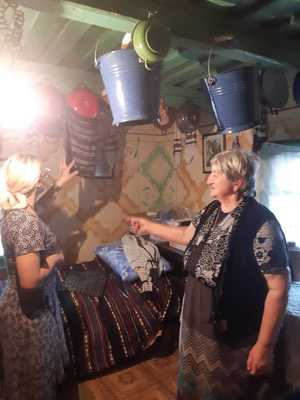
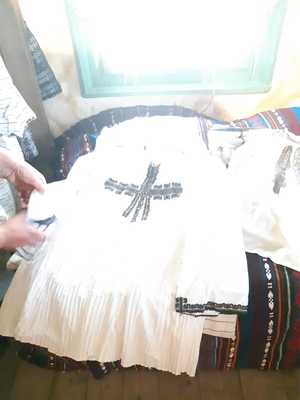
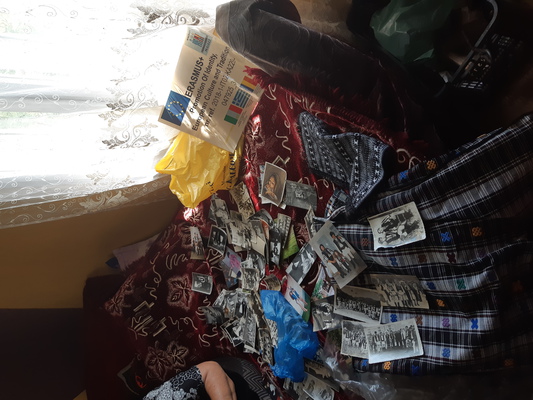
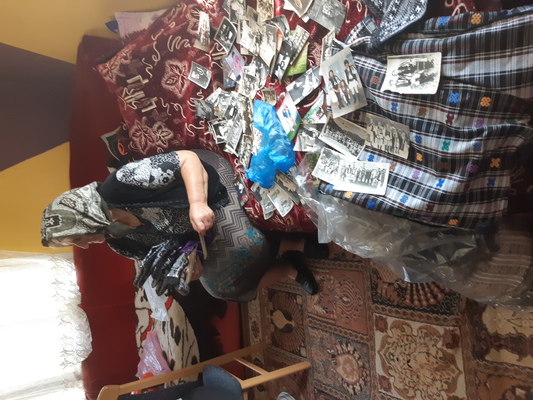
P 13. TRADITIONAL FOLK COSTUME AND TRADITIONAL OBJECTS IN THE JIU VALLEY
Two students, Lavinia Popescu and Georgiana Pitec, collected information about the traditional folk costume and the traditional objects from the Jiu Valley and translated it into English. They also started to work on a power point presentation that will be presented during C3 activities to give the students the possibility to learn about our customs and traditions.
traditional folk costume and traditional objects.docx
EDUCATIONAL VISIT AT A GUITAR MANUFACTURING LAB AND A SILKSCREEN PRINTING LAB (GENIKO LIKIO HORTIATI - P15.1 ACITIVITY)
On 16th November 2019, on the occasion of the “MADE IN THESSALONIKI” event, the pupils of the Erasmus+ project of our school (B Class) and the teachers Mrs.Maria Mangana and Mrs.Dimitra Ntomprou visited a guitar manufacturing and a silkscreen printing enterprise.
“MADE IN THESSALONIKI” is a parallel happening of “8th OPEN HOUSE THESSALONIKI” concerning visits at local creative and production enterprises. It aims to highlight the city’s creative side, introducing to the public established and rising creators and producers who are active in Thessaloniki and stand out for their work.
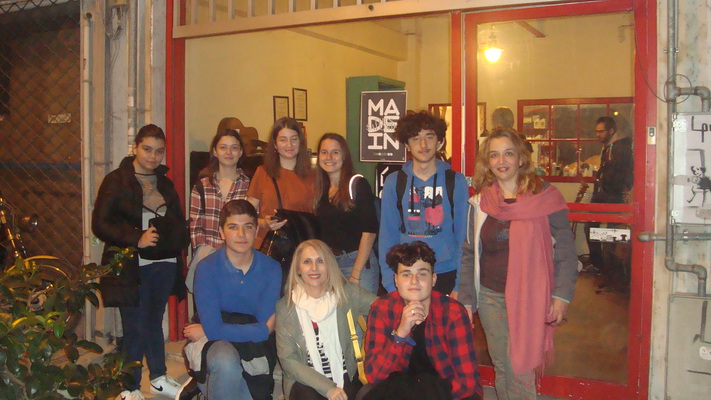
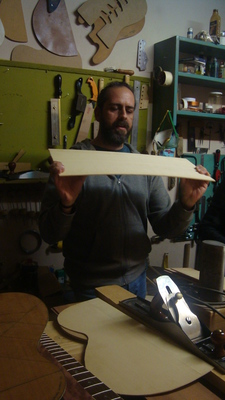
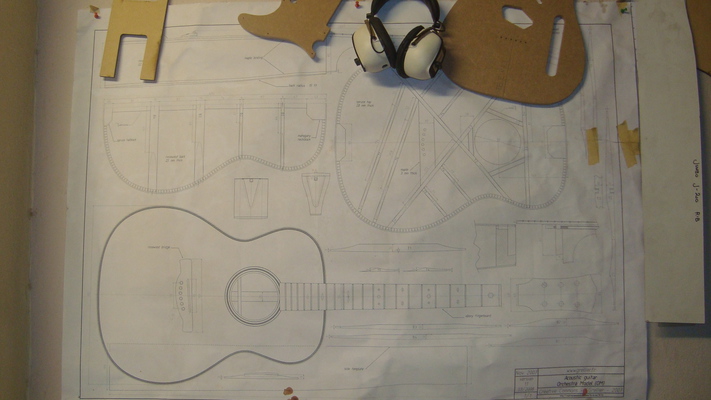
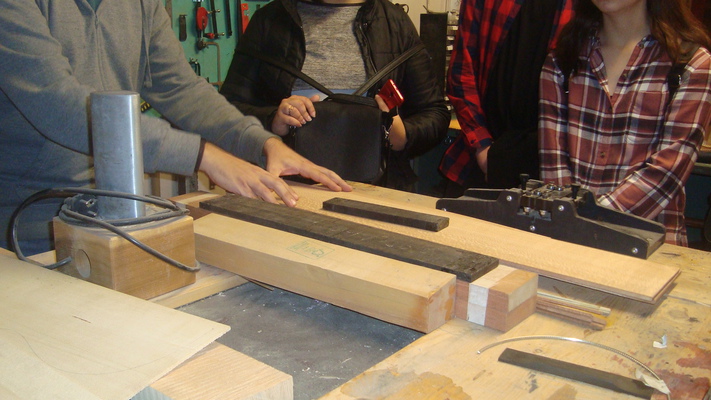
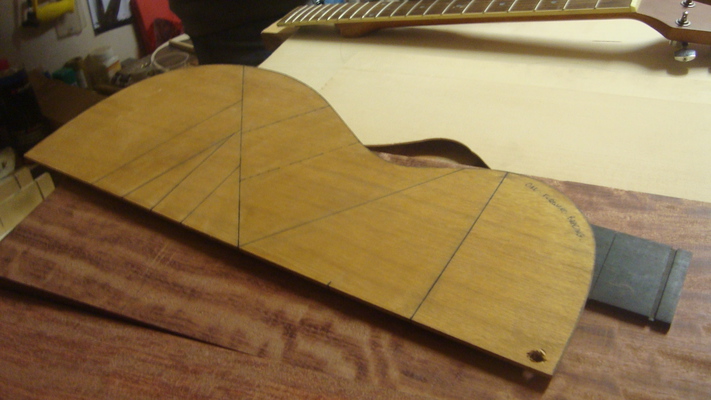
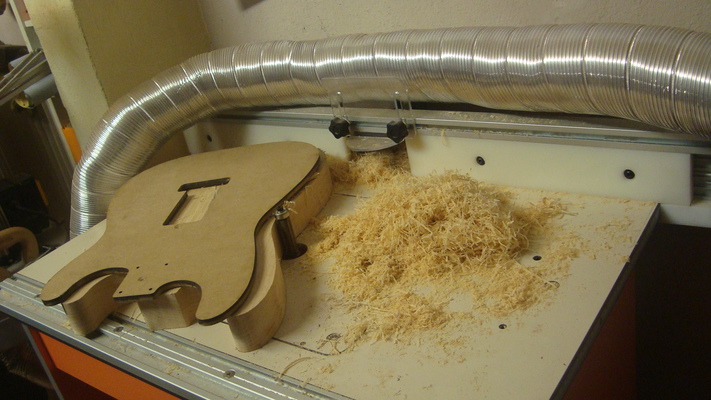
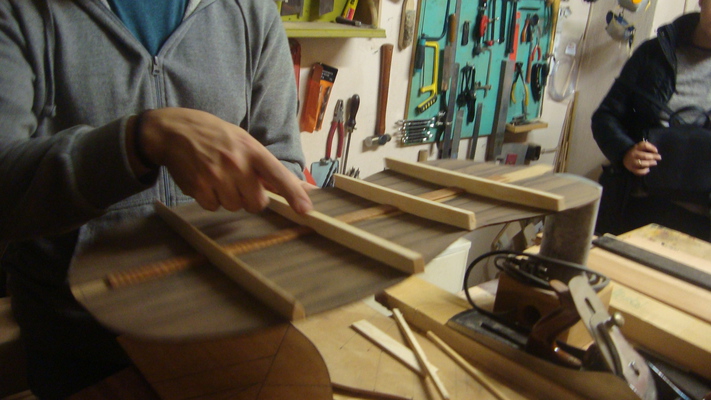
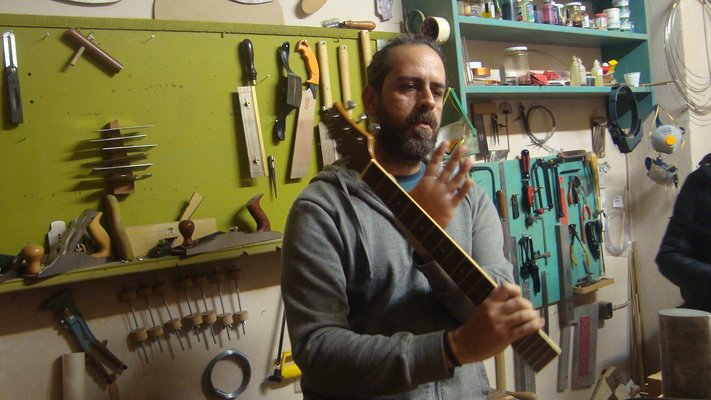
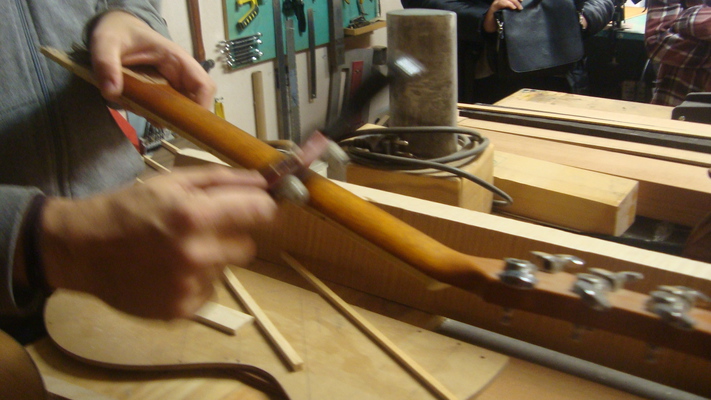
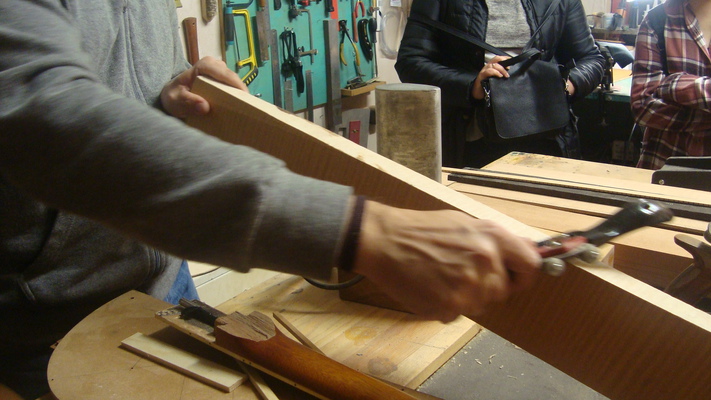
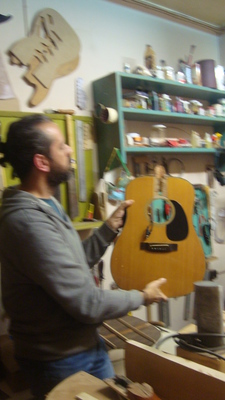
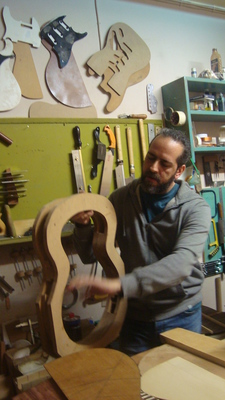
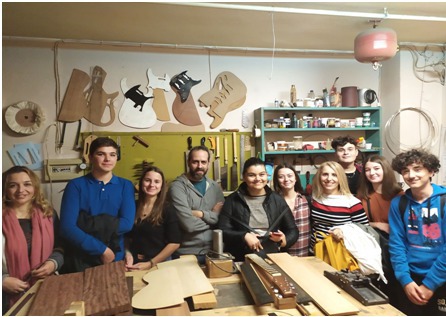
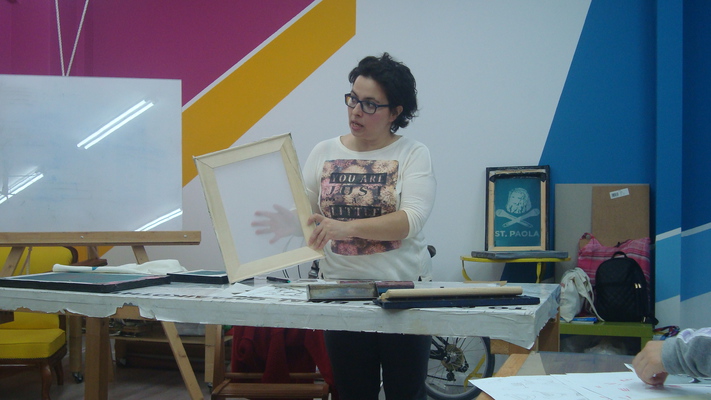
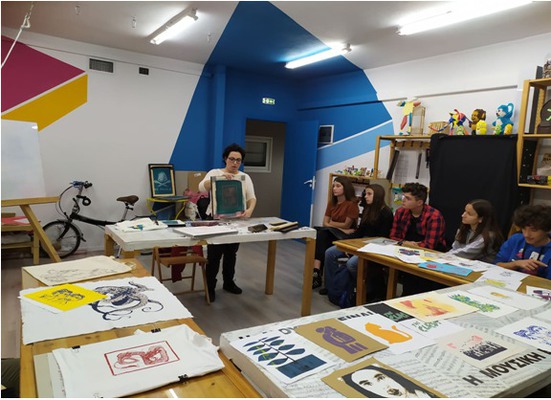
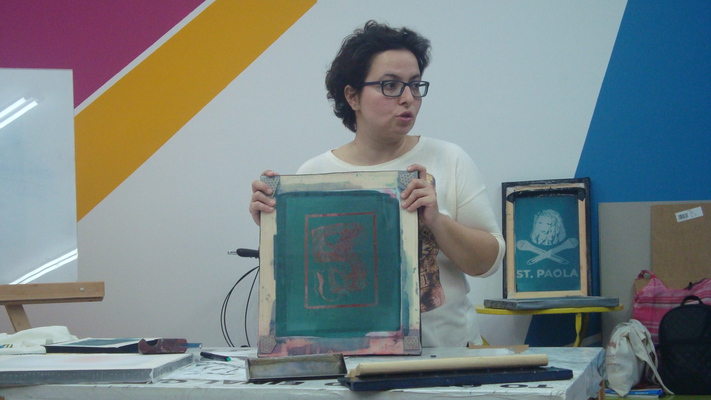
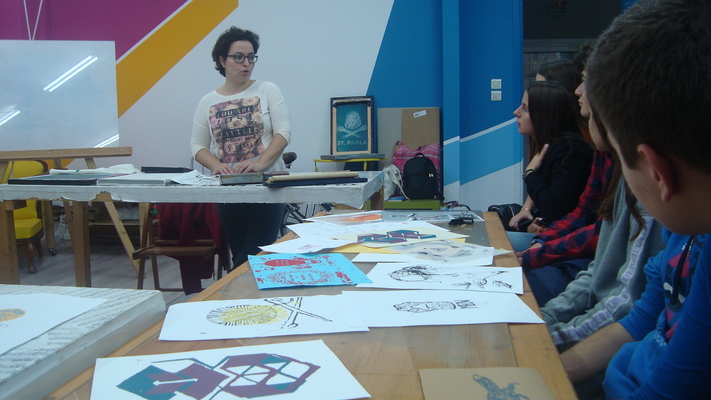
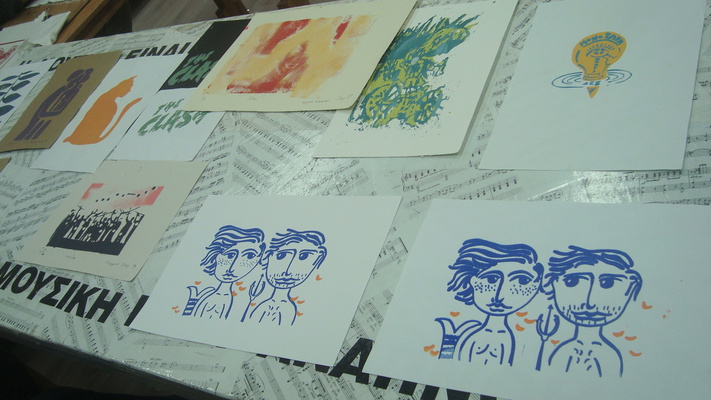
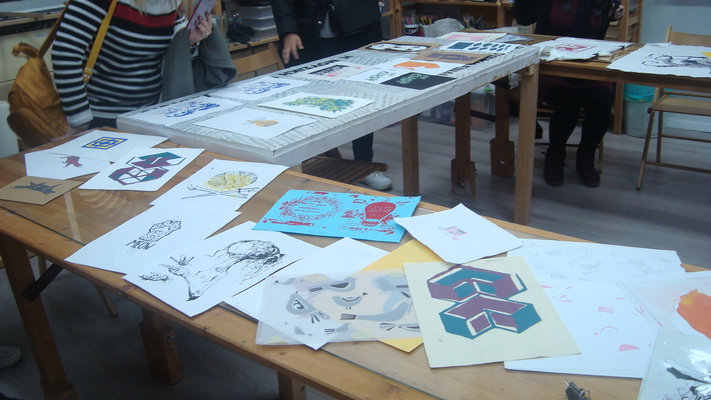
The pupils of the Erasmus+ project of our school had the opportunity to discuss with the entrepreneurs the challenge of their work and prepared a relative presentation of their visit.
GR_P15_1_MADE IN THESSALONIKI.pdf
VISIT AT TWO BUILDINGS OF THE “8th OPEN HOUSE THESSALONIKI” EVENT (GENIKO LIKIO HORTIATI - P15.2 ACITIVITY)
On 23rd and 24rth November 2019, on the occasion of the “8th OPEN HOUSE THESSALONIKI” event, the pupils of the Erasmus+ project of our school (B Class) visited two buildings of high architectural interest; an apartment at the waterfront of Thessaloniki and a lawyer office at Aristotelous Spuare.
“OPEN HOUSE” is one of the most important global institutions for the promotion of architecture. The “OPEN HOUSE” project invites the public to explore and understand the value of architecture. Every year for one weekend, private and public buildings open their gates to everyone for free and the city is transformed into a big museum, with its buildings and architecture being the exhibits.
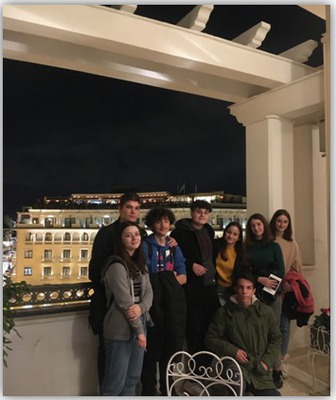
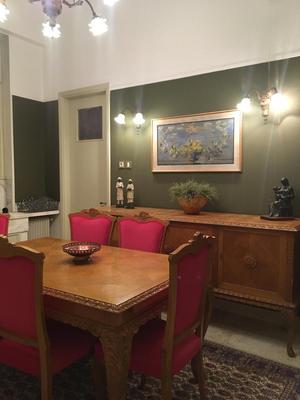
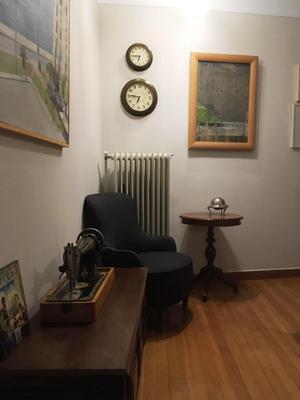
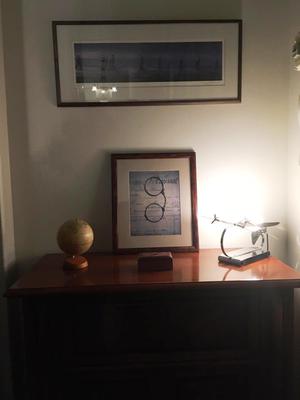
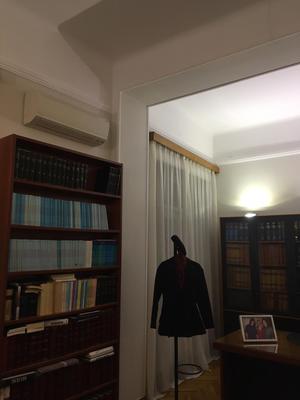
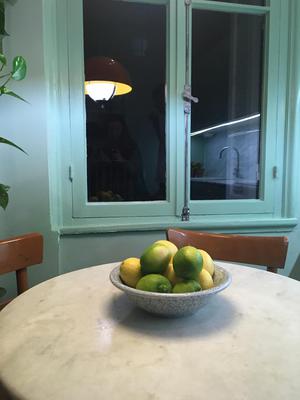
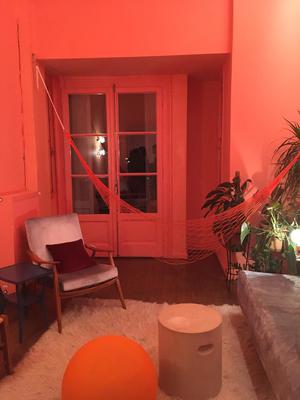
The pupils of the Erasmus+ project of our school had the opportunity to be guided to the two buildings, learn their history, admire their classical architecture and prepared a relative presentation of their visit.
GR_P15_2 OPEN HOUSE.pdf
EDUCATIONAL VISIT AT THE MUSEUM OF CASTS AT THE SCHOOL OF PHILOSOPHY OF THE ARISTOTLE UNIVERSITY AND THE ETHNOLOGICAL MUSEUM OF MACEDONIA – THRACE (GENIKO LIKIO HORTIATI - P17.1 ACTIVITY)
On February 5, 2020, the Erasmus+ group of our school and the teachers Mrs.D.Ntomprou, Mrs.Ch.Dritsari, Mrs.Ch.Vangeloudi and Mr.V.Angelis visited the Museum of Casts at the school of Philosophy of the Aristotle University and the Ethnological Museum of Macedonia – Thrace.
We were impressed by the exhibits of both museums and we learned important things about ancient and modern Greek culture. Initially, the Cast museum has a large variety of statues from the Ancient and Roman era. We also found excellent quality copies of entire portions from Kamara (the Arch of Galerius). We distinguished the statue of a Kouros in its natural size and the statue of Zeus that flies the lighting.
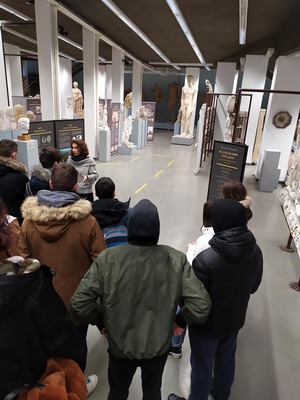
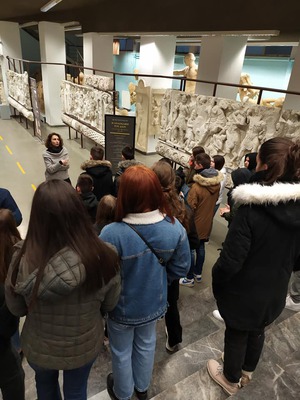
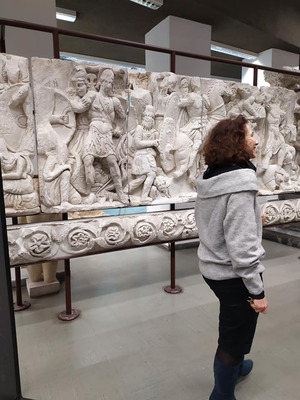
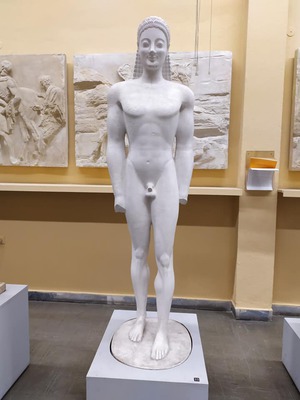
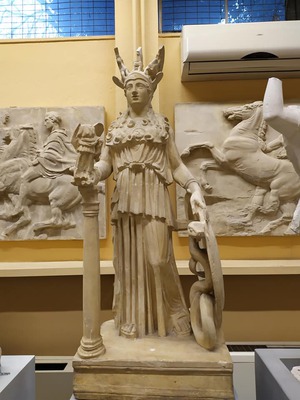
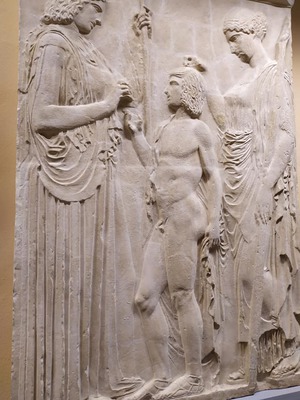
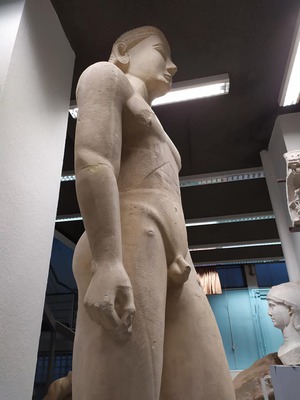
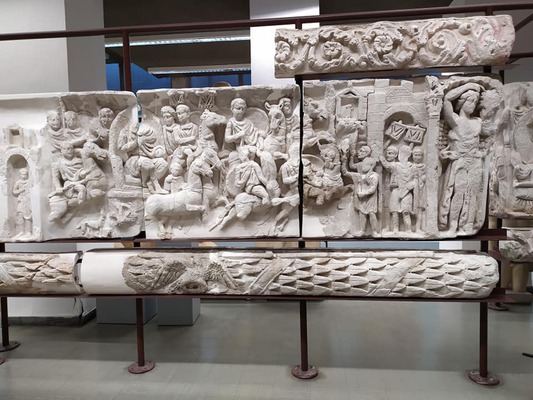
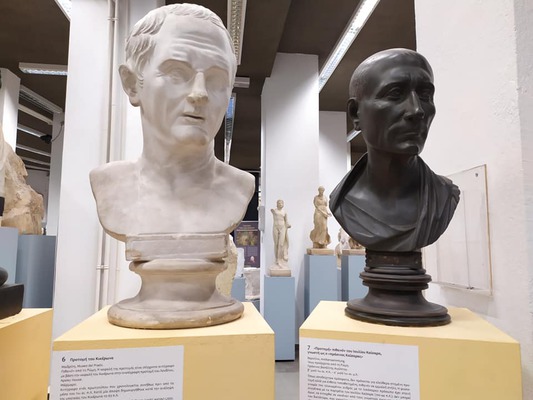
Then we visited the Folklife and Ethnological Museum of Macedonia – Thrace, founded in 1927 and organised by Professor Stilpon Kyriakides in early 1930s. There we saw the tools used by the Greeks not only in their daily life but also in special occasions, such as weddings and holidays. We admired the costumes, the jewelry, the vases and many other items that are elements of the popular culture and tradition of our people and reflect our modern history.
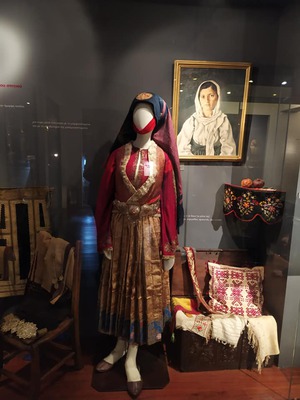
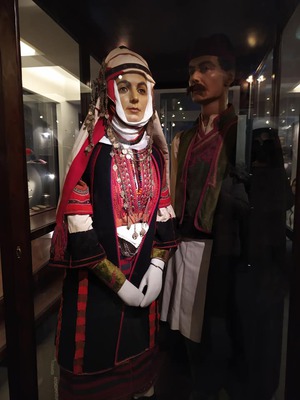
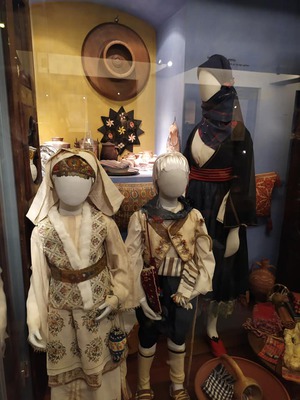
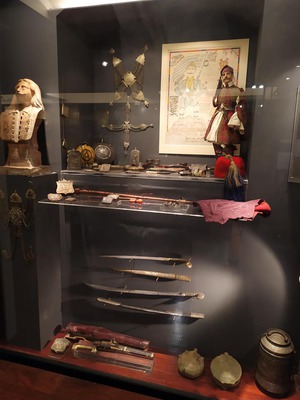
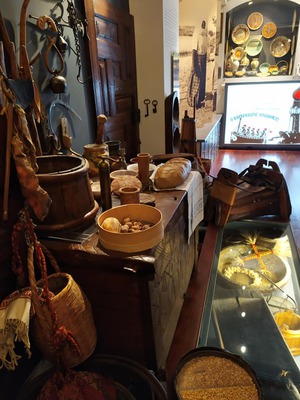
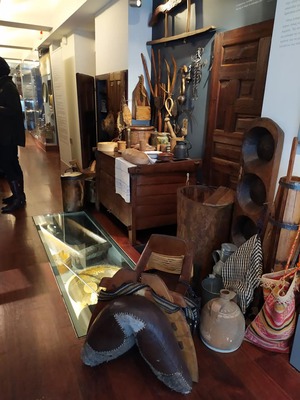
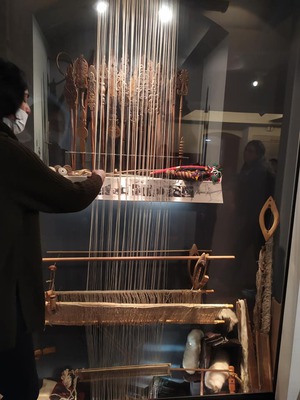
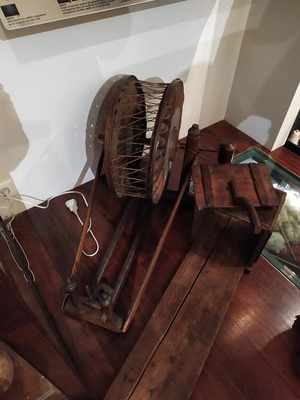
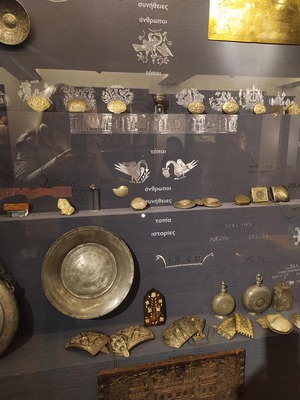
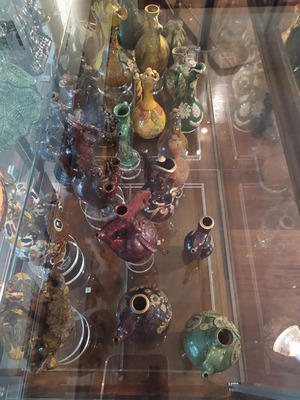
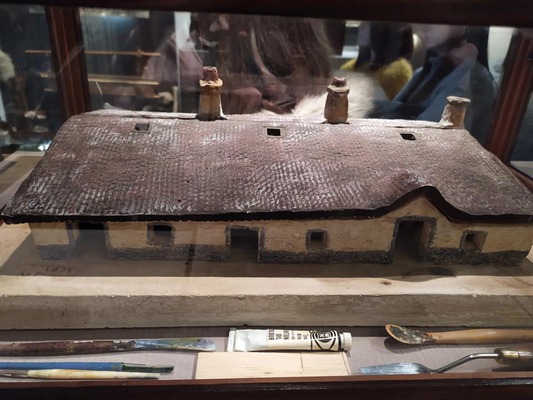
You can find more information about the Folklife and Ethnological Museum of Macedonia – Thrace at the URL: http://www.lemmth.gr/monimes#
DEEPENING AT THE ROMAN AQUEDUCT OF HORTIATIS AND SUGGESTING WAYS FOR PROMOTING THE LOCAL MONUMENT (GENIKO LIKIO HORTIATI - P20_21.1 ACTIVITY)
On Tuesday 19 May 2020 the pupils of B2 class under the guidance of the teacher Mrs.M.Mangana visited the Roman aqueduct of Hortiatis. The roman aqueduct of Hortiatis, dated from the 1rst century AD, is a local cultural heritage of great importance but not very well promoted for tourism. The pupils studied ways and plans in order to highlight the monument and prepared a relative presentation.
GR_P20_THE ROMAN AQUEDUCT OF HORTIATIS.pdf
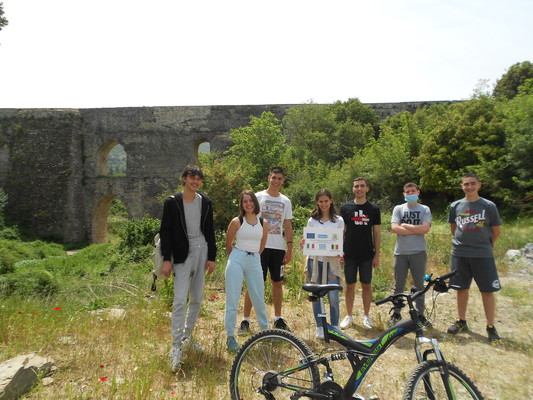
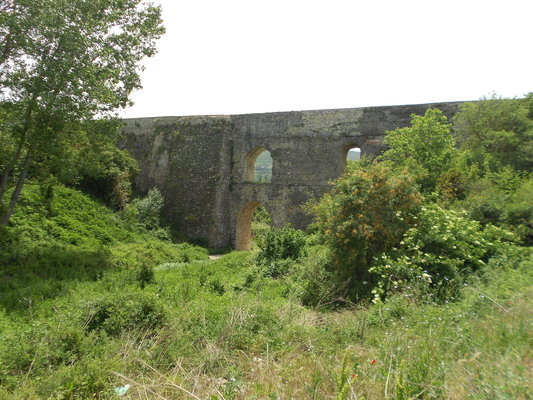
WRITING A SHORT GUIDE FOR THE ROMAN AQUEDUCT OF HORTIATIS (GENIKO LIKIO HORTIATI - P31.2 ACTIVITY)
In March 2021, the Erasmus pupils of A3 class studied the history of the Roman aqueduct of Hortiatis in cooperation with the pupils of C class who had worked also on the monument and produced a short guide for the Roman aqueduct of Hortiatis. The guide is a narration of the history of the monument by the monument itself:
THE ROMAN AQUEDUCT OF HORTIATIS
"Hello! I am an imposing aqueduct built at the entrance of Hortiatis. Unfortunately I have never met my creator but I know that it all started in the 1st century AD during the Roman era. I was a very important water bridge! My total remaining length is 223 meters and as for my height if you look up at me you will feel dizzy. My water was transported by a natural flow channel, following the route Exohi – Ano Poli. Even in times of crisis I have never stopped offering my water generously. For nineteen whole centuries until 1975, I was the main source of water for the whole city of Thessaloniki. Unfortunately, I will never forget 1430 AD when Sultan Murad II interrupted my flow in order for the inhabitants of Thessaloniki to surrender, succumbing to water scarcity. During my life I got sick several times with the risk of even collapsing. Fortunately, however, in 2012 the 9th Ephorate of Byzantine Antiquities and my dear friend Professor Mr.Manolis Manoledakis took care of the necessary work of preserving and promoting me. People from all over the world visit me and take pictures with me, as I am the only Roman aqueduct that survives in the region of Central Macedonia!"
The guide was posted on a digital map together with other monument guides of the area of Thessaloniki produced by students of the schools of Thessaloniki.
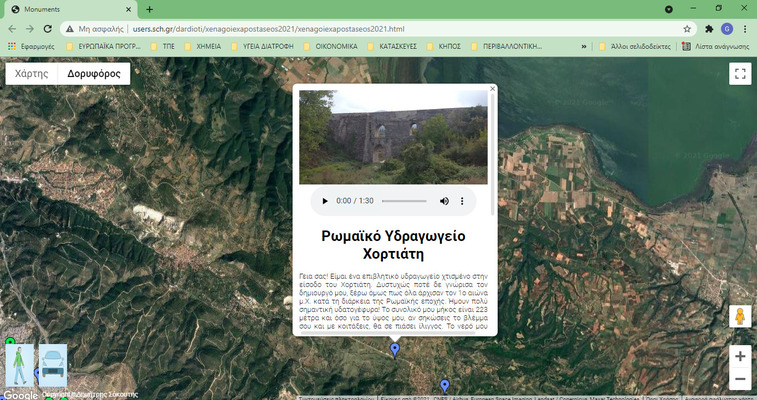
MAKING A VIDEO FOR PROMOTING THE ROMAN AQUEDUCT OF HORTIATIS (GENIKO LIKIO HORTIATI - P34.1 ACTIVITY)
In June 2021, the pupils of the Erasmus+ project (A3 class) who had created the short guide of the Roman Aqueduct of Hortiatis (P31.2 Activity) continued to promote the monument by creating a relevant video. The student of A3 class Alexandros Kekos recorded by his drone the monument. He and his classmates Antigoni Koukaroudi, and Aikaterini Olga Papadoudi recorded themselves reading the history of the monument and produced the final video.